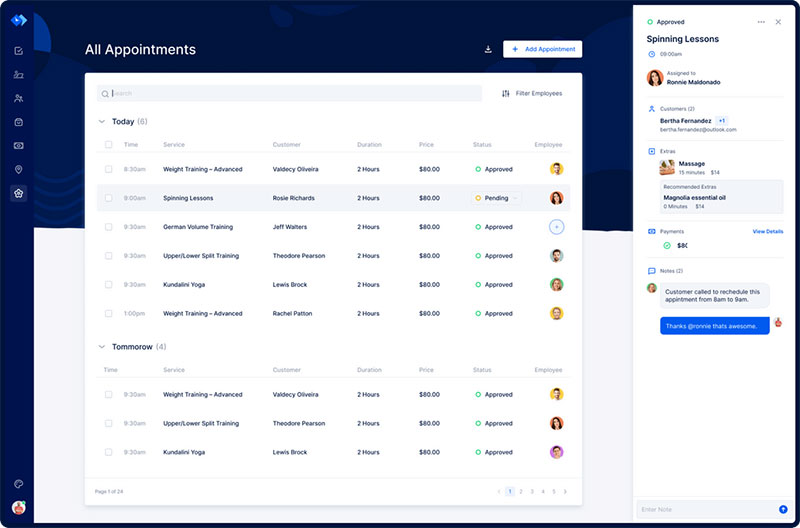Photographers today must rely on more than word-of-mouth referrals to attract clients. Investing in advertising is an excellent way to publicize their photography services.
It brings new business opportunities and promotes growth.
But how can you build an effective marketing plan as a professional photographer? What are important aspects you can not overlook when advertising? How can you make use of the best photography marketing ideas?
This guide will explain how to create engaging content and direct it toward the right audience. It will introduce different marketing efforts every photographer should explore. Lastly, it will help you understand automated advertising and its benefits.
Continue reading to discover everything you need to know about marketing for photographers.
Determine Who Your Target Audience Is
The first step to successful marketing for photographers is identifying your target audience. You need to direct your services and products toward their concerns and circumstances.
Why pinpoint a target market?
Defining your target market is determining who your ideal client will be. It is the base of your photography marketing program because it dictates your strategy throughout the process. Consider
their identity, their concerns, and their preferences. You should also know their general location and budget. Try to understand what interests them.
If you advertise for the general population, you will see few results. People might see your ads, but they’ll blend in with similar photographers.
A message customized to your target audience will make you stand out from other professionals.
What you should do
Determining your prospects requires you to adjust your perspective to theirs. You need to familiarize yourself with their profile and the unique details that characterize them.
You must analyze their location, habits, interests, and character. Divide these elements into different categories to understand them better and see how they connect to each other.
Regarding location, you need to decide the range in which you will offer your services. A larger area will always mean more potential clients, but it might be an unwise choice for your business.
Keep in mind that niche markets demand more flexibility.
Research your audience’s habits. Analyze where they spend their income and what are their favorite brands. Notice what matters most to them. Use social media channels to find your audience’s interests. Social media accounts can show trends and styles your target audience may love.
Implementing those elements will help differentiate your photography marketing campaigns.
Try to understand how comfortable they are in front of the camera and if they prefer outdoor or indoor spaces. Define how they should interact with you before, during, and after a photoshoot.
What you should not do
Identifying potential clients to plan your photography marketing campaigns has some challenges.
There are several common mistakes to avoid.
One of the most disastrous mistakes is stereotyping.
Assuming you already know your prospective clients will lead to misdirected marketing efforts. Instead, you should conduct thorough research and find ways to ask them what you need to know
Listen to and adapt to your customer’s needs and wishes. After all, a service that people do not need or want will not sell, no matter how great it is.
If you have collected prospects’ data, you must use it mindfully. Generalizing your message tones it down and takes the personal element from it.
Rather than segmenting your audience, try to personalize your marketing and adjust it to their experiences. Showing them you see and care for them will lead to more clients and long-lasting customer relationships.
The Different Types of Advertising
What types of advertising can you use as a photographer?

In advertising, there are many paths you can take. Still, being aware of your choices will help you reach your target audience.
Some methods are better for achieving short-term goals, while others bring long-lasting benefits. Be sure to include budget considerations when building your advertising strategy.
In this stage, analyze your business needs and resources to define an effective marketing strategy. Decide how much you will spend on marketing. Will it be a large or a small investment?
Consider what you know about your audience. Which type of advertisements would they see more easily and more often? Where will they find your message? When would it be impactful?
Free marketing techniques
Unpaid advertising is an excellent choice regardless of your budget. These methods are organic, demanding more effort than the paid alternatives but with long-term rewards.
There are 3 free resources you can try:
- Testimonials and referrals
You can ask for customer feedback to share on your website and social media platforms. After a successful photo shoot, suggest that customers refer their friends, family, or professional contacts back to you.
You can offer discounts or a gift to past clients who enroll in your referral program and the new ones they generate. This approach is also a way to bond and create more long-lasting relationships with them. - Content marketing
Content marketing involves creating engaging, relatable, and valuable content consistently. You can do that through a professional-looking website. You should regularly publish a new blog post for search engines like Google to rate you higher. Doing so also lets your customers know you are
As for article themes, you can share your photography inspirations, some techniques, and top tips for your clients. Your biggest goals should be to address customer concerns and educate them on matters that meet their interests. - Search Engine Optimization or SEO
SEO is a set of strategies to improve your website and lead it to rise in search results pages. It involves using specific keywords and images and updating your content regularly.
You can find information online about how to use search engine optimization, or you can use a tool to help you improve your website. SEO is important for ranking in Google, Microsoft Bing, and other search engines.
Search Engine Optimization makes your web page appear higher on organic listings, which means more people will see it. It increases the chances of growing your photography business at no cost.
Paid marketing techniques
Paid marketing for photographers is the fastest available way to generate leads. Check out these 6 strategies you can opt for:
- Print advertising
Print advertising is one of the most costly approaches to marketing your photography business. Yet, it is also one of the most effective. You can buy an ad placement for your business in specific publications. For example, you can purchase ads in a bridal magazine if you are a wedding photographer. - Google Ads
Google Ads is a paid resource that merges with Google business pages. Using Google Ads data analysis, you can refine your ad targeting and measure campaign performance more accurately. You create a header that fits into commonly searched terms, and your business page appears at the top of the results page. - Facebook Ads
Social media marketing is one of the most popular choices, given its low cost and massive potential. If you’re wondering how to measure ROI on Facebook ads, it’s important to note that Facebook Ads allows you to set parameters ensuring your target market sees your advertisements, which is especially excellent for local businesses.
Besides Facebook, other platforms offer similar advertising options. - Display advertising
In this case, you buy ads from third-parties websites, like businesses related to your niche or other photography blogs. This way, you’ll benefit from the high traffic they already have. - Pay-per-Click ads
PPC ads are perfect for independent professional photographers. Their cost depends on the time users click on them. With the PPC method, you only pay for what you get. - LinkedIn Ads
Among ads on online platforms, the ones on LinkedIn are supposed to be the most effective. This platform is outstanding for making relevant business connections. Note that their prices are much higher than
Compose Your Advertising Message
A successful advertising message is memorable, purposeful, relatable, compelling, and incites action. These characteristics are especially important since your ads must surpass others’ posts.
What is an advertising message?
The advertising message is the content you want to convey to your audience. It is the core of your photography marketing campaigns, usually designed to generate a positive response or action.
You need to consider many factors regarding the message, including what it is, how to transmit it, where, and when. The proper combination of these elements makes an advertising message successful.
An engaging message connects your photography business to its current clients and attracts new ones. It can generate leads or solidify your present customer relationships.
Not only does it involve a precise goal, but it also incites a specific action. Consider its most significant benefits below.
Why do you need an advertising message?
A proper advertising message is key to reaching any potential client. A referral program or an email marketing campaign will only succeed with an impactful statement.
No matter the type of photography you specialize in, or the size of your business, the message you convey is most important. It determines whether your audience will understand and relate to you.
As a reminder of you and your work, your message builds trust. It improves your current relationships and attracts new clients.
This message is also an opportunity for you to educate your audience. For instance, portrait photographers can approach the subject of the first session. Or landscape photographers might discuss camera presets.
There are many benefits to creating a memorable advertising message. One of the first is promoting your photography portfolio and connecting you with other creatives. You can also find co-marketing partners to boost your campaigns.
Co-market is an excellent opportunity to associate with other local businesses. You can take part in initiatives like a local auction or charity event, and the organizing party will promote you.
Another advantage comes from the chance to analyze the people receiving your message. Your advertising statistics will tell you when, where, and how customers reacted to your ads.
All these factors are elements that affect your income. By taking the time and effort to build an excellent advertising message, you are fostering better and more consistent sales.
How can you write a compelling message?
Promoting your business online or through printed marketing materials can be complex. There are many sides to an advertisement and many strategies you can use to improve it.
One of the most rewarding tactics is focusing on your audience. Use your advertising message to address their concerns, their knowledge, and their needs.
Approach a specific point of interest with clarity. A broad message will not resonate with your audience but fade among the public. A straightforward approach is more likely to get you noticed and remembered.
Focus on positive facts. Highlight the benefits your portrait photography business can bring to its clients. Use simple language in your campaigns and emphasize the benefits of your services.
Finally, try to offer your clients something new or unexpected. You introduce a different service, announce upcoming events, or launch a new promotion.
When you express your message, consider what you want your clients to feel when they come across it. You want them to relate to it but still feel enough curiosity and excitement that they act accordingly.
Refine Your Branding
Branding is essential for the success of any company today. It gives your photography business meaning and identity in the consumers’ eyes.
Building a consistent brand is one of the best ways to make your advertising memorable. Despite being usually linked to big corporations, it is as beneficial to small, local businesses.
The benefits of branding for your clients
From the customers’ point of view, branding might not be so important. Still, its conscious and subconscious effects are significant.
A consistent brand image connects you to your clients as no other strategy can. It reflects your creative process, photography style, and personality.
Branding makes your business easily recognizable by giving it a unique look and tone of voice. It highlights the values that differentiate you from other photographers.
Customers will know you. Branding will help you build trust among your audience and improve customer loyalty.
The benefits of branding for your photography business
Branding means something unique to you as a photographer. You can use your name or create a new one to represent your company. A branded business provides a new level of visibility for your business. You will have an exclusive logo, a curated color palette, and a specific style that can go from your website design to the fonts you use.
Creating a distinctive image is an insightful process. You will analyze your work and yourself as a photographer.
Understand first what makes your photos stand out from others, and which aspects are the most authentic. Try to capture your approach to photography. Branding will accentuate your most original features.
How to refine your branding techniques
The core of branding is consistency. But before applying its elements to your website, social media, and ads, take the time to build it carefully.
Here are six tips you should apply when building a branded image:
Determine your distinctive qualities
All humans have specific characteristics that lead them to stand out from each other. So, as a photographer, you will also be able to find the traits that distinguish you from others.
What is unique about your style? What makes your photography work special? And what makes it yours? Questions like these will help you discover your distinctive features.
Do proper market research
Good market research is priceless for most businesses today, but many photographers shy away from it. Market studies are the best way to assess your competitors. Through them, you can know their offers and strategies, and get fresh inspiration.
Develop an original symbol or logo for your business
Building an original logo is a staple when it comes to efficient marketing for photographers. This unique symbol representing your business will mark all your content, from printed ads to social media posts. Seeing it time and time again will improve customer recognition and loyalty.
Pick a color palette and select your fonts
You have probably noticed that most brands have specific imagery that characterizes them. With time, people relate those colors and letters to the company that uses them.
You can choose the colors based on personal preferences or opt for shades with a unique meaning. The same goes for fonts. You should select two or three that you will use on most of your content.
Build an emotional connection
If you have a portrait photography business, you likely love most things linked with capturing stunning moments. And that love must come through with every ad and post.
Generating an income is essential to running and growing your business. But you will need to connect deeply with your audience to succeed.
Develop a stunning but functional website
Advertising for photographers aims for the audience to reach out to its author. For that to happen, they need to find your business online.
You must build an engaging website that captures your essence. It will open new opportunities and frame your photography portfolio.
Stick to your branding strategy
Embracing all types of photography work and accepting all the projects that reach you is a popular but unreasonable policy. After all, you likely have a specific style and skill set that fits a subset of photography.
You might be afraid that commissions for your preferred work are not enough to counter your expenses. But investing in an area you do not wish to grow in is wasting your time and resources.
Instead, be mindful of the work you accept and what you showcase. They build your overall image and speak to your audience. Sticking to your branding strategy will bring benefits in the long run.
You want to maintain a consistent style and convey a sense of focus through your photography. That resiliency and authenticity will attract new clients that relate to your work and value it.
Invest in Your Customer Relationship Practices
Developing good relationships with your clients is the core of a successful business. It improves customer loyalty and increases your prospects.
Happy clients feel will leave positive reviews and attract new clients. They will likely join referral programs and recommend and resort to your services again.
As a photographer, you move in a highly competitive market. So every excellent review you receive is a step toward getting noticed by other businesses and new clients.
There are many strategies you can use to improve your customer service. This way, you design a unique experience for your audience to enjoy, from the first moment they meet you to every time they admire and remember your work.
Investing in these strong bonds will allow you to convert and retain customers easily, growing your customer database. With time, doing so will help you build an extraordinary network to expand your opportunities.
How can you treat customer service and relationships as an extension of marketing?
Advertising and customer service
Advertising attracts potential clients to your business, but customer service is the key to keeping them. It also enables you to use those positive relationships to add value to yourself and your operation.
Investing in purposeful advertising and excellent customer service will build a solid brand. Happy customers will leave much-needed praising reviews and come back for more.
Then, successful commissions will multiply to complement your image. This continued experience will help you build new skills and improve your work.
Over time, you will notice how your photos are better and more impactful. You can bring new services and content for your clients and provide exclusive offers at higher prices.
You will get to experiment with new techniques while staying true to your style. This way, you will continuously grow and develop as a professional photographer.
How to fortify your relationship with your clients
Here are 6 steps you can take to solidify your customer relationships:
- Focus on giving
Relationships should never be one-sided because the one sustaining them will eventually tire and walk away. It is a mistake people often make when dealing with others. Take time to focus on your relationships with customers. - Give your customers the chance to meet you in person
More often than not, clients already have an idea in mind when they schedule a photoshoot. So you can arrange a meeting to introduce yourself and discuss those ideas.
Doing so will help you guide the session to meet their expectations. - Offer customization options
Customization options are an excellent way to approach your customer’s priorities and concerns. Doing so shows you are flexible and helps build trust between you and them. - Communicate with consistency
Consistency is an essential part of customer service. You want to deliver a top-notch service in little time whenever your clients resort to you.
To facilitate processes, you can build email templates beforehand and have them ready to send. - Prepare to follow up on commissions
When you finish a work project, keep the connection with your client and try to assess how satisfied they feel. Ask for honest feedback and be ready to address any worries or doubts they might have. - Make strategic use of social media
You should reserve a set period to post content on social media and engage with your followers. Include your location and use relevant tags to enlarge your audience.
Strive to repost whenever customers mention you.
Measure Your Results
After preparing and implementing your advertising campaigns, gauge how successful you were. Doing so involves establishing clear metrics you can compare.
For instance, you can assess click-through and conversion rates or cost per click and return on investment. Online platforms and social media usually create insightful statistics you can use.
Create a clear vision of success
Success in advertising will differ based on your overall intent and goals. Hence, to create a clear vision of success for a specific ad, you must define precise objectives beforehand.
Consider using the SMART approach, which dictates that goals meet five points. They must be Specific, Measurable, Achievable, Relevant, and Time bound.
One other popular metric to gauge success is the AIDA method. It evaluates the Attention, Interest, Desire, and Action generated by an ad. It stands on the belief that advertising aims to follow a four-stage process toward conversion.
First, it should include images, fonts, and headlines that seize the public’s attention. Afterward, its content must create interest by sharing practical or valuable information.
The interest then turns into desire, with the ad addressing user needs and feelings. Finally, all these factors combined lead to conversion, in which the user responds positively to the advertisement’s call to action.
Define precise success criteria
You can measure success in various ways, always according to your goals. On some platforms, when you buy an advertisement, you access exclusive statistics on its performance.
Brand awareness is one criterion that helps you assess your marketing campaigns. Your ad should make your brand more recognizable to your target audience.
Analyze the Click-through Rate (CTR), which is the number of users who clicked on your ad. Looking into the Cost Per Click (CPC) will let you know how much you paid for each click.
Be mindful of the Conversion Rate (CR) to know how persuasive your ad was. Use Cost Per Action (CPA) to learn the cost of each conversion.
Comparing both costs with the Return On Investment (ROI) will allow you to evaluate your financial results.
Evaluate your results
Now that you have established specific metrics, you must use the right tools to gather and analyze your marketing data. These instruments can describe your ads’ performance to aid future decision-making processes.
The first mechanism you can set up is Key Performance Indicators or KPIs. They derive from the goals you have defined for your campaign and provide context and content for you to evaluate them. Most of the criteria approached above fit into the KPI category.
Subsequently, you can use code snippets to extract further data from your advertising. You can insert them in your ads, from social media to email marketing, to access detailed insights, like bounce and conversion rates.
The final step in evaluating your success is result tracking and comparison. To do more than collect informative data, continue monitoring it and comparing it to make sound conclusions.
You can use graphics or charts, and reports to represent the evolution of data.
Automate Your Photography Marketing
Automation makes advertising for photographers much easier and more valuable. There are various marketing tools to automate all stages of the advertising process discussed so far.
Whether you have a landscape or portrait photography business, these instruments enable you to save time and focus on other tasks. It boosts your ads’ outcome potential by directing each message to a suitable audience.
You can use them rather than investing time or hiring someone to manage your advertising.
Why should you choose automated marketing for your photography business?
Automation means using specific software to replace time-consuming and repetitive processes. With it, you can plan, develop, launch, and track parallel advertising campaigns with little effort.
There are many benefits to automating your photography marketing. The most impactful benefit is the potential for increased productivity.
You can take on other matters by eliminating some of marketing’s burdensome tasks from your agenda. Doing so will help you boost your efficiency and motivation, as you will focus on more satisfying assignments.
Another advantage comes with organizing your customer database into logical categories. As you receive insightful data, you can use it to section your clients according to their age groups, needs, interests, or locations.
This process also facilitates customer management. It enables you to provide increasingly better content and direct it to a suitable audience. Modifying your messages based on how users respond to your ads fosters customer loyalty.
It will improve your client relationships and bring opportunities to expand your offers. These factors lead you to attract more customers that fit within your target audience.
You will see a growing community of users that follow and engage with your content. The heightened trust leads to higher conversion rates.
Automation tools will also track your performance and deliver vital metrics for continued growth.
How can you automate marketing?
For automation, there are several strategies you can adopt. As you have considered above, the first is always to identify your target market. That is the only way to ensure your ads reach the right users.
Then, consider the following approaches:
- Automate all social media accounts using apps that create, schedule, and post content. Doing so will save time and help you enlarge your audience organically.
- Offer an enticing benefit. It could be a free ebook or brochure, a discount for the first photoshoot, or another gift. It should be compelling enough to persuade users to share their email addresses.
- Resort to Customer Relationship Management (CRM) software to develop a detailed contact inventory. This tool will enable you to group your audience based on different criteria.
- Build and implement email marketing campaigns. This way, you will consistently deliver customized content to your client’s inboxes.
- Create retargeting ads to promote prospect conversion. Sometimes clients show interest in your website or social accounts but shy away from taking action. Retargeting ads will encourage those users to respond positively to your call to action.
Use the right tools
To achieve success with photography marketing automation, you must use the appropriate software.
Not all tools fit your needs and circumstances, so assess which choices will produce the best results.
The best booking app for a photographer
Meet Trafft, the ultimate scheduling tool that’s about to revolutionize the way you manage your bookings. Trust us, you’re gonna love it!
Here’s why Trafft is a game-changer for photographers:
- Super easy: Say goodbye to those endless back-and-forth emails. With Trafft, clients can book a session with you in just a few clicks. Boom! 💥
- Customization: Add your personal touch! Customize the booking form to match your brand and style. 🎨
- Availability: Set your working hours and let Trafft handle the rest. No more accidental double bookings or missed appointments. 📅
- Automated reminders: Keep everyone in the loop! Trafft sends out automated email and SMS reminders, so no-shows are a thing of the past. 💌
But wait, it gets even better:
- Sync with your favorite calendar apps (Google, iCal, Outlook, you name it!)
- Multi-location support for photographers who shoot at different spots 🌎
- Group sessions: Planning a workshop? Trafft makes organizing group events a breeze! 🙌
Ready to simplify your life? Give Trafft a try and watch your photography business flourish. Let your creativity flow while Trafft takes care of the logistics.
When writing, make sure your content is grammatically correct and makes sense. Use a tool like Grammarly to correct spelling or punctuation mistakes.
To implement SEO best practices, you have yet another type of software to help you. SEMrush allows you to track your content and research keywords and competitors.
FAQs on Advertising for Photographers
Why is advertising important for photographers?
Photographers may reach more customers and display their work to a wider audience through advertising.
They can expand their reach and gain new customers by using a variety of advertising methods.
Also, they can benefit from advertising by creating a name for themselves and gaining recognition in their field, both of which can increase their earning potential.
What are some effective advertising channels for photographers?
Instagram, Facebook, online directories, marketplaces like Thumbtack, and Yelp, and targeted Google and Facebook advertisements are all great places for photographers to advertise their services.
Making connections with other photographers and professionals in the field can also help spread the word about your business.
How much should photographers budget for advertising?
Each photographer’s advertising budget needs to be tailored to their own objectives, preferred advertising outlets, and marketing approach.
While some photographers may opt to invest only a tiny fraction of their earnings into marketing, others may choose to devote a larger portion of their profits to this area in order to quickly expand their client base.
What are some tips for creating effective photography ads?
Photographers may improve the effectiveness of their advertising by highlighting their best work and directly appealing to their potential clients.
Advertisements need to be succinct and appealing visually, with a single, obvious call to action. Photographers can improve their outcomes by experimenting with multiple ad versions and honing their strategy over time.
How can photographers track the success of their advertising efforts?
Photographers can measure the efficacy of their marketing campaigns by keeping tabs on clicks, impressions, and sales.
Google Analytics and similar tools allow them to monitor site visitors and their actions. Photographers may enhance their return on investment (ROI) over time by studying these indicators and making adjustments to their advertising plan.
Is social media a good platform for photographers to advertise on?
Advertising photography on social media is a great way to get your work in front of a wide, interested audience.
Instagram and Facebook, for example, provide photographers with a variety of advertising choices, such as sponsored posts and targeted ads, that can be adapted to their own needs and those of their target audience.
Should photographers advertise locally or nationally?
Photographers should decide whether to focus their marketing efforts locally or nationally based on the demographics of their target market.
Photographers who want to make a name for themselves in a certain area may benefit from local advertising, while those who want to reach a wider audience or become recognized as an industry leader may benefit more from national campaigns.
Think about who you want to reach and why before settling on an advertising approach.
Conclusion On Successful Advertising For Photographers
Advertising is a significant part of running any successful business, and photography is no exception. It attracts customers, solidifies your current relationships, builds communities, and opens exciting opportunities.
This article provided a detailed guide on advertising for photographers.
First, it shed light on the importance of establishing a specific target audience. Then, you learned how to analyze the different types of advertising, with free and paid options alike.
It’s also important to know how to refine your branding and make your business recognizable to users. Once you do that, improve your customer relationships and focus on providing excellent services.
Finally, measure success in your advertising campaigns and automate your marketing with the right tools.
Be sure to continue up to date with marketing trends for photographers. By following these tips, you will reap the benefits of successful advertising campaigns.




